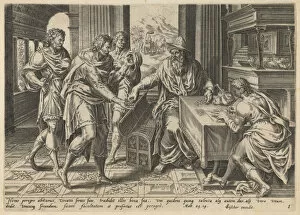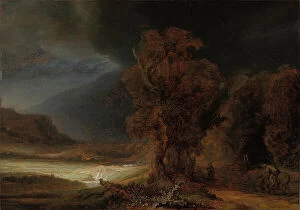Justness Collection
"Justness: A Reflection on Parables and Paintings" In the realm of art, parables come to life through vivid strokes of a brush
All Professionally Made to Order for Quick Shipping
"Justness: A Reflection on Parables and Paintings" In the realm of art, parables come to life through vivid strokes of a brush, inviting us to ponder the concept of justness. Rembrandt van Rhijn's "The Parable of the Rich Fool" transports us to a world where wealth blinds one from true wisdom. As we gaze upon Lucas van Doetechum's rendition of "The Parable of the Talents, " we are reminded that justice lies in utilizing our gifts for the betterment of others. Pieter Bruegel's masterpiece, "The Blind Leading the Blind, " serves as a poignant metaphor for society's struggle with fairness. It urges us to question who truly leads and guides us towards justice. Similarly, Pieter Aertsen's depiction of "The Parable of the Wedding Feast" reminds us that true justice is found in embracing all without discrimination or prejudice. Domenico Fetti's portrayal of "The Parable of the Wheat and Tares" teaches us about patience and discernment when seeking justice amidst chaos. Frans Pourbus' moving interpretation captures our hearts with his portrayal of redemption in "The Parable of the Prodigal Son. " Through these timeless artworks, we witness how injustice can be confronted head-on. The Unjust Steward depicted by an anonymous artist challenges our notions about fairness and compels us to reflect on our own actions. Yet it is perhaps in Jan Sanders van Hemessen’s painting “The Good Samaritan” that we find solace in humanity’s capacity for compassion and empathy. This powerful image resonates across centuries, reminding us that justness lies not only within laws but also within ourselves. As we explore Eugene Delacroix’s work inspired by “The Good Samaritan, ” created years later, its emotional intensity amplifies our understanding that acts rooted in kindness transcend time and space.





















